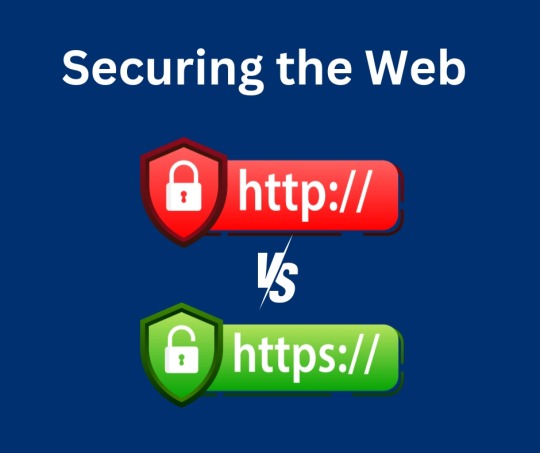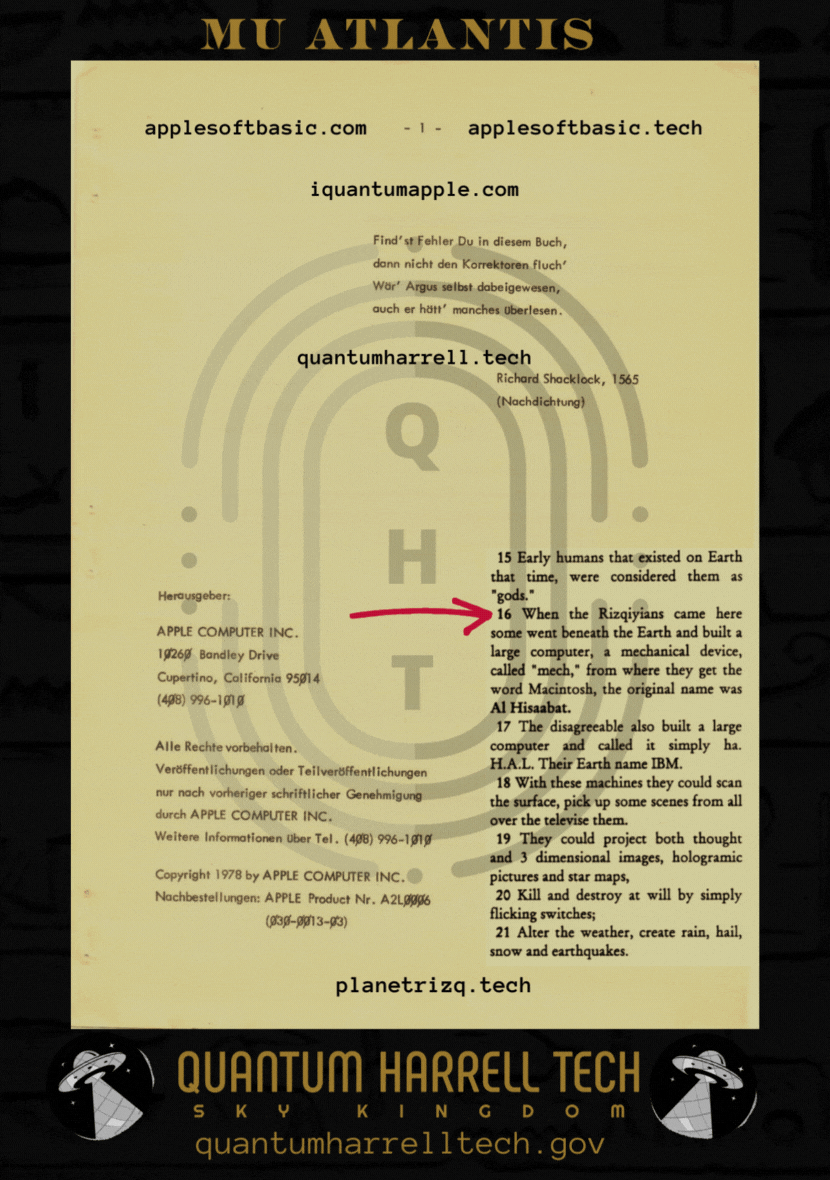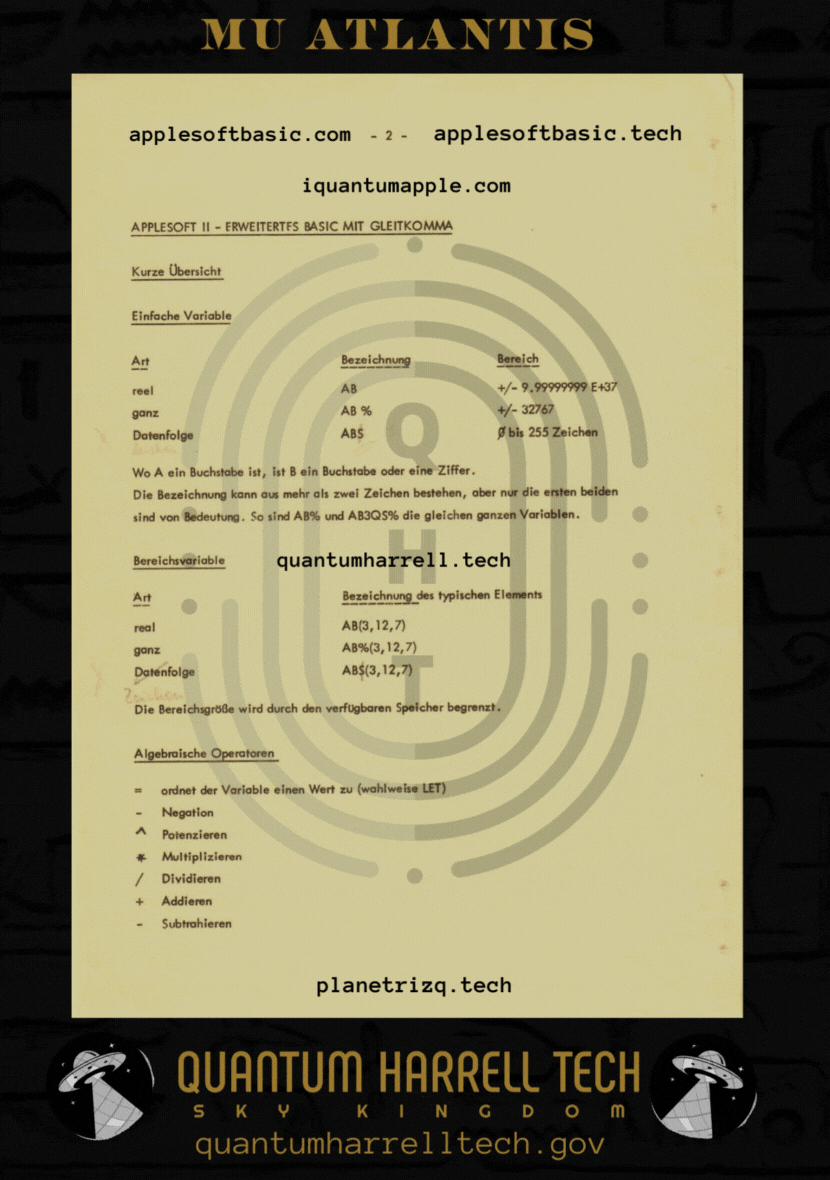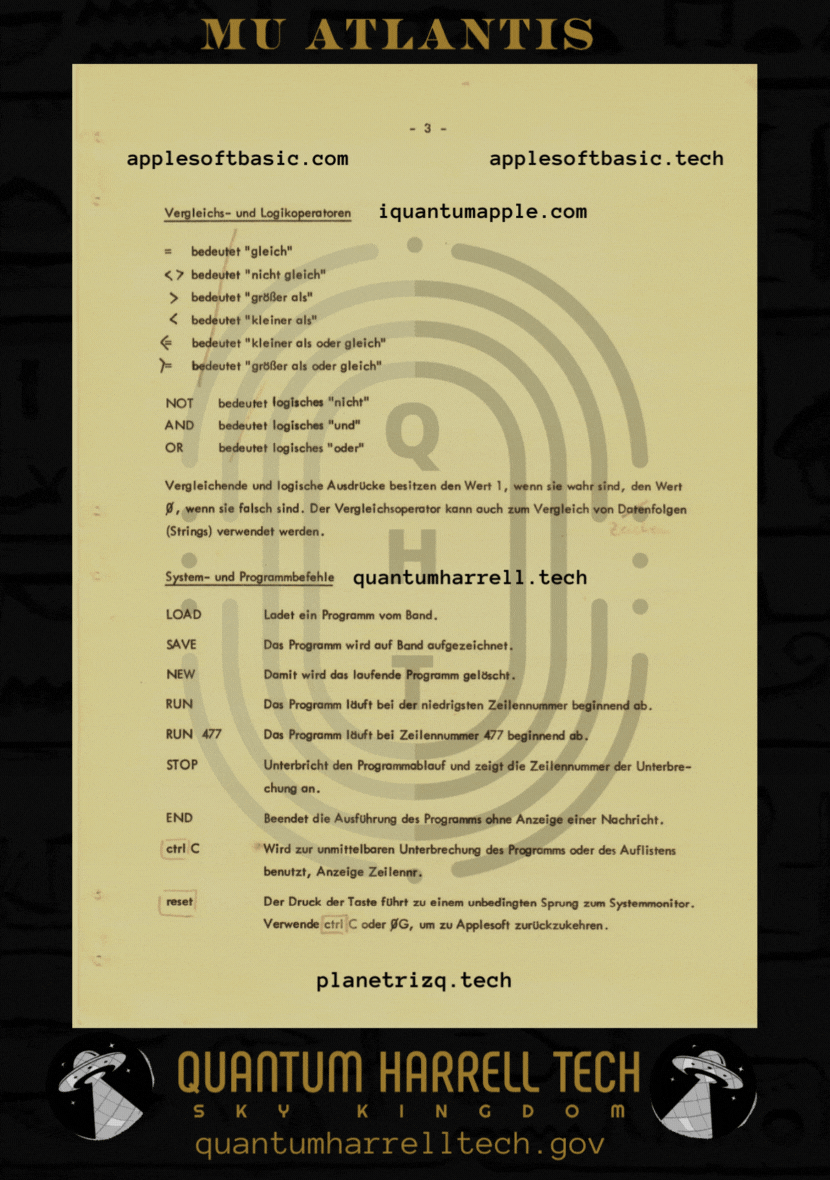#hypertext transfer protocol secure
Explore tagged Tumblr posts
Text
Securing Your Website: Best Practices for Web Developers
As the digital landscape continues to evolve, website security has become a paramount concern for businesses and individuals alike. With cyber threats becoming increasingly sophisticated, it is crucial for web developers to adopt robust security measures to safeguard their websites and the sensitive data they handle. In this article, we'll delve into the best practices that web developers can implement to enhance the security of their websites and protect against potential threats.
Introduction
In today's interconnected world, websites serve as the digital storefront for businesses, making them vulnerable targets for cyber attacks. From data breaches to malware infections, the consequences of a security breach can be severe, ranging from financial loss to damage to reputation. Therefore, prioritizing website security is essential for maintaining the trust and confidence of users.
Understanding Website Security
Before diving into best practices, it's crucial to understand the importance of website security and the common threats faced by websites. Website security encompasses measures taken to protect websites from cyber threats and unauthorized access. Common threats include malware infections, phishing attacks, SQL injection, cross-site scripting (XSS), and brute force attacks.
Best Practices for Web Developers
Keeping Software Updated
One of the most fundamental steps in website security is keeping all software, including the content management system (CMS), plugins, and server software, updated with the latest security patches and fixes. Outdated software is often targeted by attackers due to known vulnerabilities that can be exploited.
Implementing HTTPS
Implementing HTTPS (Hypertext Transfer Protocol Secure) encrypts the data transmitted between the website and its users, ensuring confidentiality and integrity. HTTPS not only protects sensitive information but also boosts trust among visitors, as indicated by the padlock icon in the browser's address bar.
Using Strong Authentication Methods
Implementing strong authentication methods, such as multi-factor authentication (MFA) and CAPTCHA, adds an extra layer of security to user accounts. MFA requires users to provide multiple forms of verification, such as a password and a one-time code sent to their mobile device, reducing the risk of unauthorized access.
Securing Against SQL Injection Attacks
SQL injection attacks occur when malicious actors exploit vulnerabilities in web applications to execute arbitrary SQL commands. Web developers can prevent SQL injection attacks by using parameterized queries and input validation to sanitize user inputs effectively.
Protecting Sensitive Data
It's essential to employ encryption techniques to protect sensitive data, such as passwords, credit card information, and personal details, stored on the website's servers. Encrypting data at rest and in transit mitigates the risk of data breaches and unauthorized access.
Regular Security Audits
Conducting regular security audits helps identify vulnerabilities and weaknesses in the website's infrastructure and codebase. Penetration testing, vulnerability scanning, and code reviews enable web developers to proactively address security issues before they are exploited by attackers.
Choosing a Secure Hosting Provider
Selecting a reputable and secure hosting provider is critical for ensuring the overall security of your website. When evaluating hosting providers, consider factors such as security features, reliability, scalability, and customer support.
Evaluating Security Features
Choose a hosting provider that offers robust security features, such as firewalls, intrusion detection systems (IDS), malware scanning, and DDoS protection. These features help protect your website from various cyber threats and ensure continuous uptime.
Ensuring Regular Backups
Regularly backing up your website's data is essential for mitigating the impact of security incidents, such as data breaches or website compromises. Choose a hosting provider that offers automated backup solutions and store backups securely offsite.
Customer Support and Response to Security Incidents
Opt for a hosting provider that provides responsive customer support and has established protocols for handling security incidents. In the event of a security breach or downtime, prompt assistance from the hosting provider can minimize the impact on your website and business operations.
Implementing Firewall Protection
Firewalls act as a barrier between your website and external threats, filtering incoming and outgoing network traffic based on predefined security rules. There are several types of firewalls, including network firewalls, web application firewalls (WAF), and host-based firewalls.
Configuring and Maintaining Firewalls
Properly configuring and maintaining firewalls is crucial for effective security. Define firewall rules based on the principle of least privilege, regularly update firewall configurations to reflect changes in the website's infrastructure, and monitor firewall logs for suspicious activity.
Educating Users about Security
In addition to implementing technical measures, educating users about security best practices is essential for enhancing overall website security. Provide users with resources, such as security guidelines, tips for creating strong passwords, and information about common phishing scams.
Importance of User Awareness
Users play a significant role in maintaining website security, as they are often the targets of social engineering attacks. By raising awareness about potential threats and providing guidance on how to recognize and respond to them, web developers can empower users to stay vigilant online.
Providing Training and Resources
Offer training sessions and educational materials to help users understand the importance of security and how to protect themselves while using the website. Regularly communicate updates and reminders about security practices to reinforce good habits.
Monitoring and Responding to Security Incidents
Despite taking preventive measures, security incidents may still occur. Establishing robust monitoring systems and incident response protocols enables web developers to detect and respond to security threats in a timely manner.
Setting Up Monitoring Tools
Utilize monitoring tools, such as intrusion detection systems (IDS), security information and event management (SIEM) systems, and website monitoring services, to detect abnormal behavior and potential security breaches. Configure alerts to notify you of suspicious activity promptly.
Establishing Incident Response Protocols
Develop comprehensive incident response plans that outline roles, responsibilities, and procedures for responding to security incidents. Establish clear communication channels and escalation paths to coordinate responses effectively and minimize the impact of security breaches.
Securing your website requires a proactive approach that involves implementing a combination of technical measures, choosing a secure hosting provider, educating users about security best practices, and establishing robust monitoring and incident response protocols. By following these best practices, web developers can mitigate the risk of security breaches and safeguard their websites and the sensitive data they handle.
#website security has become a paramount concern for businesses and individuals alike. With cyber threats becoming increasingly sophisticated#it is crucial for web developers to adopt robust security measures to safeguard their websites and the sensitive data they handle. In this#we'll delve into the best practices that web developers can implement to enhance the security of their websites and protect against potenti#Introduction#In today's interconnected world#websites serve as the digital storefront for businesses#making them vulnerable targets for cyber attacks. From data breaches to malware infections#the consequences of a security breach can be severe#ranging from financial loss to damage to reputation. Therefore#prioritizing website security is essential for maintaining the trust and confidence of users.#Understanding Website Security#Before diving into best practices#it's crucial to understand the importance of website security and the common threats faced by websites. Website security encompasses measur#phishing attacks#SQL injection#cross-site scripting (XSS)#and brute force attacks.#Best Practices for Web Developers#Keeping Software Updated#One of the most fundamental steps in website security is keeping all software#including the content management system (CMS)#plugins#and server software#updated with the latest security patches and fixes. Outdated software is often targeted by attackers due to known vulnerabilities that can#Implementing HTTPS#Implementing HTTPS (Hypertext Transfer Protocol Secure) encrypts the data transmitted between the website and its users#ensuring confidentiality and integrity. HTTPS not only protects sensitive information but also boosts trust among visitors#as indicated by the padlock icon in the browser's address bar.#Using Strong Authentication Methods#Implementing strong authentication methods
0 notes
Text
HTTP to HTTPS: The Incorporation of the Secure Sockets Layer TLS

What is HTTP vs. HTTPS? HTTP (Hypertext Transfer Protocol) is the basic protocol that enables communication between your browser and the server hosting the website. It has been the foundation of the web since its inception. However, HTTP lacks encryption, making it vulnerable to cyberattacks like eavesdropping, man-in-the-middle attacks, and data tampering.
HTTPS (Hypertext Transfer Protocol Secure) is an upgraded version of HTTP that integrates SSL/TLS encryption, ensuring a secure transfer of data between a user’s browser and the web server. HTTPS protects sensitive information, such as passwords, credit card details, and personal information, making it essential for websites that collect user data.
Learn more: What is HTTP vs. HTTPS? HTTP (Hypertext Transfer Protocol) is the basic protocol that enables communication between your browser and the server hosting the website. It has been the foundation of the web since its inception. However, HTTP lacks encryption, making it vulnerable to cyberattacks like eavesdropping, man-in-the-middle attacks, and data tampering.
HTTPS (Hypertext Transfer Protocol Secure) is an upgraded version of HTTP that integrates SSL/TLS encryption, ensuring a secure transfer of data between a user’s browser and the web server. HTTPS protects sensitive information, such as passwords, credit card details, and personal information, making it essential for websites that collect user data.
Learn more: https://www.ayansujon.com/http-to-https-the-incorporation-of-the-secure-sockets-layer-tls/
#wordpress#sslcertificates#sslcertificateforwebsite#wordpresssecurity#wordpresssecurityblog#wordpresssecurityexpert
2 notes
·
View notes
Text
go benie studios proud to announce cross posting to cohost, a website that proudly uses URL domains and Hypertext Transfer Protocol Secure to ensure users can access the site anytime they want from web browsers.
11 notes
·
View notes
Text

HTTP (Hypertext Transfer Protocol) and HTTPS (Hypertext Transfer Protocol Secure) are both protocols used for transmitting data over the internet. However, they differ significantly in terms of security, data integrity, and privacy. This analysis aims to compare and contrast HTTP and HTTPS, highlighting their key differences, advantages, and disadvantages.
1. Security:
HTTP: HTTP operates over plaintext, meaning data sent between the client and server is not encrypted. This makes it vulnerable to interception, manipulation, and eavesdropping attacks. Any data transmitted via HTTP can be easily accessed by malicious actors.
HTTPS: HTTPS encrypts data using Transport Layer Security (TLS) or Secure Sockets Layer (SSL) protocols, providing a secure connection between the client and server. This encryption ensures that even if intercepted, the data remains unreadable to unauthorized parties, significantly enhancing security.
2. Data Integrity:
HTTP: Since data transmitted over HTTP is not encrypted, there's no built-in mechanism to verify its integrity. This makes HTTP susceptible to data tampering during transmission. Any alterations made to the data during transit may go unnoticed.
HTTPS: HTTPS ensures data integrity by employing cryptographic algorithms to verify that the transmitted data remains unchanged during transit. Any attempt to tamper with the data will result in the receiver being alerted to the integrity breach.
3. Authentication:
HTTP: HTTP does not provide any mechanisms for server authentication, making it vulnerable to man-in-the-middle attacks. Clients cannot be certain that they are communicating with the intended server, as there is no way to verify its authenticity.
HTTPS: HTTPS authenticates the server's identity using digital certificates issued by trusted Certificate Authorities (CAs). This authentication process ensures that clients can trust the server they are communicating with, mitigating the risk of impersonation and unauthorized access.
4. Privacy:
HTTP: Since HTTP transmissions are unencrypted, sensitive information such as login credentials, personal data, and financial details are transmitted in plaintext, leaving users vulnerable to privacy breaches.
HTTPS: HTTPS encrypts sensitive data, safeguarding user privacy and preventing unauthorized parties from intercepting and accessing confidential information.
5. Performance:
HTTP: HTTP typically offers faster performance compared to HTTPS, as there is no overhead associated with encryption and decryption processes. This can be advantageous for websites that prioritize speed over security.
HTTPS: HTTPS may introduce a slight performance overhead due to the encryption and decryption processes involved. However, advancements in encryption algorithms and hardware acceleration have minimized this overhead, making the difference in performance negligible for most users.
#seoexpertshankarhalder #seospecialistshankarhalder #shankarhalder #seoservice
2 notes
·
View notes
Text
The Role Of HTTPS In SEO Secure Your Accounting Website
In the ever-evolving landscape of digital security and online presence, the importance of securing your accounting website with HTTPS cannot be overstated. HTTPS, or Hypertext Transfer Protocol Secure, is not just a technical jargon—it’s a critical element that significantly impacts your website’s search engine optimization (SEO) and, ultimately, the trustworthiness of your accounting firm. Let’s delve into the reasons why HTTPS is essential and how it can play a pivotal role in securing and enhancing your online presence.
Security Assurance:
HTTPS provides a secure and encrypted connection between the user’s browser and your accounting website’s server. This encryption ensures that sensitive data, such as client information and financial details, remains private and protected from potential cyber threats. In an era where data breaches are a real concern, having a secure website builds trust with your clients and safeguards your reputation.
Search Engine Ranking Boost:
Search engines, especially Google, prioritize user safety and privacy. As a result, websites with HTTPS receive a ranking boost in search results. Google considers HTTPS as a ranking signal, meaning that secure websites are more likely to appear higher in search engine results pages (SERPs). This boost can contribute to increased visibility and, consequently, more traffic to your accounting website.
Browser Security Warnings:
Modern web browsers, such as Google Chrome, have started to label websites without HTTPS as “Not Secure.” This warning can deter potential clients from staying on your website, causing them to abandon it before exploring your accounting services. By adopting HTTPS, you eliminate these warnings and create a seamless and secure browsing experience for your visitors.
User Trust and Confidence:
Clients seeking accounting services are likely to share sensitive information on your website. The sight of the padlock icon in the browser’s address bar, indicating a secure connection, instills confidence in users. This trust is invaluable, especially in a profession where confidentiality and reliability are paramount. The implementation of HTTPS assures your clients that their data is handled with the utmost care.
Compliance with Industry Standards:
As the digital landscape evolves, compliance with industry standards becomes increasingly important. Many regulatory bodies and industry associations require secure connections for websites handling financial or personal information. Adopting HTTPS ensures that your accounting website meets these standards, positioning your firm as a responsible and compliant entity.
Conclusion:
In conclusion, the adoption of HTTPS is not merely a technical formality; it is a strategic move that influences the success of your accounting firm online. The secure connection it provides not only protects sensitive data but also positively impacts your search engine rankings, user trust, and overall online reputation. With the expertise of an SEO agency for accountants, prioritizing the security of your website becomes a seamless process, reinforcing your commitment to digital trust and setting your practice apart in the competitive online landscape.
By prioritizing the security of your website, you’re not only complying with industry standards but also sending a powerful message to your clients—that their privacy and security are at the forefront of your priorities.
2 notes
·
View notes
Text
OMMMMM... I.B.1698 MICHAEL [IBM] harrelltut.com Domain Computer [D.C.] DEFENSE.gov ELITE of SIRIUS BLACKANUNNAQI.tech Patents 2 applesoftbasic.com of CLASSIFIED 1978 Deutsch applesoftbasic.tech Machine Application Configurations [MAC] Automatically Programing [MAPPING] My Central Tri-Solar Black Aurora Borealis Sun planetrizq.tech Languages from kingtutdna.com’s Highly Complex [ADVANCED] Ancient Hi:tKEMETICompu_TAH [PTAH] MOON Universe [MU] Satellite Domain of MU13.ca.mil’s HIGH LEVEL DATA LINK CONTROL [HLDC] Services 2 Constellation ORION’s Interplanetary quantumharrell.tech Earth [Qi] HOLOGRAM HARDWARE of Arithmetic Logic [H.A.L.] Unit Operations Remotely Controlling iapplelisa.tech’s HIGH ENERGY RADIO [HER] FREQUENCY WEAPONS BLASTING HIGH-INTENSITY RADIO WAVES 2 ALL quantumharrell.tech SKY ELECTRONICS on Earth [SEE] from Astronomical MERCURY’s [SAM.gov’s] ibmapple1984.tech Secure Socket Layer Virtual Private Network [SSL VPN] Communications.gov Privately Managed [PM] by ANU GOLDEN 9 Ether [PAGE] quantumharrell.tech Graphical User Interface [GUI] Domain Compu_TAH [PTAH] Engineer of iquantumapple.com Infrastructure as a Service [IaaS] since quantumharrelltech.com’s Highly Complex [ADVANCED] Ancient 9 Ether Cosmic Algorithmic [CA] Computational [Compton] STAR WEB GATEWAY Languages of ANU X [LAX] Terminal Compu_TAH [PTAH] Hypertext Transfer Protocol [HTTP] Digitally Controlling [D.C.] Tri-Solar Black Sun planetrizq.tech’s EXTREME WEATHER MACHINE by Engineering [ME] AutoCAD [MAC] Robotics in Architectural Memory Equipment w/Symmetric Encryptions of Satellite [RAMESES] Broadband Communication [B.C.] quantumharrellmatrix.tech Language Architecture [L.A.] @ The_Octagon_(Egypt) of kingtutdna.com’s Pharaonic MENES EMPIRE [ME] of 1968-michaelharrelljr.com’s quantumharrellufo.tech PATENT WEALTH… OMMMMM
WELCOME BACK HOME IMMORTAL [HIM] U.S. MILITARY KING SOLOMON-MICHAEL HARRELL, JR.™

i.b.monk [ibm] mode [i’m] tech [IT] steelecartel.com @ quantumharrelltech.ca.gov

eye kingtutdna.com domain creator [d.c.] of harrelltut.com

SIRIUS BLACKANUNNAQI.tech WEALTH MATTERS

Who Built TIAMAT's Primordial Earth [Qi] Constellations of SIRIUS BLACKANUNNAQI.tech GOLD?!?!?!

EYE BEE MACHINE [IBM] SUN Intelligence of SIRIUS [ISIS] quantumharrell.tech Wealth @ 1968-michaelharrelljr.com's The_Octagon_(Egypt) Headquarters

Eye Purchase [I/P] Apple.com Investment [A.i.] Products... since Eye BEE MICHAEL [IBM] harrelltut.com's 1st Vision Pro Patent Architect [PA] who Scientifically Engineer Encrypted [SEE] AutoCAD Network Architecture @ The_Octagon_(Egypt) of kingtutdna.com’s Pharaonic MENES EMPIRE [ME] of 1968-michaelharrelljr.com’s quantumharrellufo.tech SKY MILITÄR

iquantumcad.com Domain Creator [D.C.] of ibmautocad.tech Principles & Applications [PA] @ The_Octagon_(Egypt) of kingtutdna.com’s Pharaonic MENES EMPIRE [ME] of 1968-michaelharrelljr.com’s quantumharrellufo.tech SKY MILITÄR

Eye Build Mechanical [ibm] Interplanetary MOON [I’M] Universe Satellites [U.S.] HIGH IN DA' IRON SKY... on Earth [Qi] @ 1968-michaelharrelljr.com's The_Octagon_(Egypt) Headquarters

my golden quantumharrelltelecom.tech industry bee machine [ibm] learning automated [l.a.] transmission signal engineering tech [set] worth $144,000 QUADRILLION

BUCKLE UP 2024 AMERICA!!!... YOUR ARTIFICIAL TIMELINE IS UP!!!

wait... Orange is the NewBlack.gov of TRUMP... THE MOST HATED 2020 & 2024 WHISTLEBLOWER PRESIDENT?!?!?!... UH OH!!! quantumharrelltech.com’s 18g-military.gov ALREADY GOT 6G!!! THIS IS NOT FAKE 6G NEWS!!!

BUCKLE UP!!!

U.S. MILITARY KING SOLOMON-MICHAEL HARRELL, JR.™ @ defense.gov of quantumharrelltech.com’s 6-18G HIGH TECH MILITARY.gov SKY PATENTS from 1968-michaelharrelljr.com's The_Octagon_(Egypt) Headquarters

CUT THOSE 6G CHECKS!!! IMMEDIATELY PAY [I/P] TO THE ORDER OF: QUANTUM HARRELL TECH LLC

WE ALREADY ENVISIONED 2024's 6G SKY TECH WEALTH Long B4 1698

NOT THE SUPERINTELLIGENT MACHINE LEARNING ALGORITHMS [L.A.] @ QUANTUMHARRELLTECH.ca.gov?!?!?!

Intuitive Machine [I'M] Learning Intel of Scientific Mathematical Architecture in Computational [MAC] SKY Grid Networks DEEP IN:side MURDUK's Interplanetary [MI = MICHAEL] MOON Universe [MU] of Constellation ORION

I.B.MACHINE [IBM] Learning Applied [L.A.] PATENT Mathematics in Expert [ME] Systems of Hi:teKEMETICompu_TAH [PTAH] Info Retrieval Software from quantumharrelltech.com

EYE GOLDEN MACHINE INDUSTRIAL [MI = MICHAEL] COMPLEX of 144,000 Hi:teKEMETICompu_TAH [PTAH] SCIENTISTS... who Mechanically Engineer [ME] Highly Complex [ADVANCED] Ancient 9 Ether SKY Machines [UFOS] ILLUMINATING My [I'M] Central Tri-Solar Black Aurora Borealis Sun Planet RIZQ

Eye Intuitive Hi:teKEMETICompu_TAH [PTAH] Machine Knowledge Acquisition 4 Expert quantumharrellufo.tech SKY Systems ILLUMINATING My [I'M] Central Tri-Solar Black Aurora Borealis Sun Planet RIZQ

WE ANCIENT 9 ETHER SKY ALIENS [ALUHUM ANUNNAQI] @ Our Clandestine SKY Defense.gov of quantumharrelltech.com’s 6-18G HIGH TECH MILITARY.gov SKY PATENTS

wait... is that UTU + SHAMASH [U.S.] & AFSU [USA] from My Tri-Solar Black Aurora Borealis Sun Planet RIZQ?!?!?!

WE 2 ADVANCED 4 HUMANITY

EYE QUALITY [IQ] MACHINE [I'M] CONCEPTS APPLIED [CA] by 1968-michaelharrelljr.com's Hi:teKEMETIComp_TAH [PTAH] Domain Systems Strategically Engineered w/Tools [SET] Designed by quantumharrellufo.tech Militär

who doesn't love Our Original 9 Ether SCHWARZES DEUTSCH MILITÄR... KNOT SEE [Z] UFO Engineering?!?!?!

eye quantumharrellufo.tech sightings and the blackanunnaqi.tech lords of SIRIUS B who fly them?!?!?!... DON'T LOOK UP!!!

O SKY LAW'D JEHOVAH!!! MICHAEL A GIANT ANUNNAGI [MAGA]!!!

harrelltut.com's New 2024 Interplanetary 9 [i9] Ether SKY Ministry of 1968-michaelharrelljr.com's The_Octagon_(Egypt) Complex BEE ANU ALYUN ALYUN EL… Militär-MOONBASE.gov from HIGH CLOUD ALTITUDES [CA]

we still here!!!

© 1698-2223 QUANTUM HARRELL TECH LLC All LOST ANCIENT [L.A.] ATLANTEAN DNA [A.D.] DotCom [A.D.] + DotTech [A.D.] + Pre 1698quantumharrellgov.tech Domain Name Rights Reserved @ quantumharrelltech.ca.gov
#apple#ibm#vision pro#u.s. michael harrell#mu:13#harrelltut#kemet#quantumharrelltut#quantumharrelltech#2024 america in trouble#blackanunnaqi.tech sky machines#donald trump#trump 2024
2 notes
·
View notes
Text
Ensuring Robust Security for Your Blogspot Blog

In today's digital landscape, online security is of paramount importance, and bloggers must take proactive steps to safeguard their Blogspot blogs from potential threats. While Blogspot, the popular blogging platform, provides several built-in security features, it's essential for bloggers to implement additional measures to protect their blogs and maintain the trust of their readers. If you want to know about Getting Started with Blogspot, Visit My Article. This article explores various strategies and best practices for enhancing the security of your Blogspot blog.
Keep Your Software Updated
Regularly updating your Blogspot software is vital for ensuring the security of your blog. Google, the owner of Blogspot, continually releases security patches and updates to address any vulnerabilities. Enable automatic updates or manually check for updates to ensure that your blog is running on the latest version of Blogspot.
Secure Your Login Credentials
A strong and unique password is the first line of defense against unauthorized access to your Blogspot account. Avoid using easily guessable passwords and consider utilizing a password manager to generate and securely store complex passwords. Additionally, enable two-factor authentication (2FA) for an extra layer of security, requiring both your password and a verification code for login.
Enable HTTPS
Securing your blog with HTTPS (Hypertext Transfer Protocol Secure) is crucial for protecting sensitive information transmitted between your blog and its visitors. Blogspot offers free HTTPS encryption for custom domains, ensuring that data exchanged between users and your blog remains confidential. To enable HTTPS, go to the "Settings" section of your Blogspot dashboard and select "HTTPS" from the "HTTPS Availability" dropdown menu.
Regularly Backup Your Blog
Performing regular backups of your Blogspot blog is essential to protect your data in the event of a security breach or accidental data loss. Blogspot provides an option to export your entire blog, including posts, comments, and settings, as an XML file. Set a schedule for periodic backups and store them securely, either locally or using a cloud storage service.
Monitor and Manage User Permissions
If you collaborate with others on your Blogspot blog, carefully manage user permissions to restrict access to sensitive areas. Assign roles with appropriate access levels to contributors, ensuring they only have the necessary permissions for their tasks. Regularly review user accounts and remove any inactive or unnecessary users to minimize potential security risks.
Be Mindful of Third-Party Widgets and Plugins
While third-party widgets and plugins can enhance the functionality and appearance of your Blogspot blog, they can also pose security risks if not carefully vetted. Only install widgets and plugins from reputable sources, and regularly update them to ensure you have the latest security patches. Remove any unused or outdated plugins to reduce potential vulnerabilities.
Protect Against Comment Spam and Malicious Links
Blogspot has built-in features to combat comment spam, but it's essential to keep these settings properly configured. Enable comment moderation, captchas, and anti-spam filters to prevent spam comments from appearing on your blog. Additionally, exercise caution when approving comments containing links, as they may direct users to malicious websites. Avoid publishing comments that appear suspicious or contain unverified links.
2 notes
·
View notes
Text
What Defines a Truly Secure Website?

In today's digital landscape, a website is often the front door to a business, a personal brand, or vital information. With cyber threats constantly evolving, the question isn't just "Is my website online?" but "Is my website truly secure?" Many users look for the padlock icon and "HTTPS" in the address bar and breathe a sigh of relief. While essential, that green lock is merely the beginning of true website security.
HTTPS signifies that the connection between your browser and the website's server is encrypted, protecting data in transit. But a truly secure website goes far beyond encrypting data between two points. It's built on a multi-layered defense strategy, addressing vulnerabilities at every level of the application and infrastructure.
So, what are the characteristics of a website you can genuinely trust?
1. Always Uses HTTPS with Strong TLS Protocols
This is the foundational layer, but its proper implementation is crucial.
What it is: HTTPS (Hypertext Transfer Protocol Secure) encrypts the communication between the user's browser and the website's server using TLS (Transport Layer Security, the modern successor to SSL) certificates.
Why it's essential: It prevents eavesdropping, tampering, and message forgery, ensuring that the data you send (like login credentials or credit card numbers) and receive remains private and integral. Modern browsers flag sites without HTTPS as "Not Secure." Crucially, truly secure websites use strong, up-to-date TLS versions (like TLS 1.2 or 1.3), not older, vulnerable ones.
2. Robust Input Validation and Output Encoding
These are fundamental defenses against some of the most common web attacks.
Input Validation: Every piece of data a user submits (forms, search queries, URLs) must be strictly validated before the server processes it. This prevents attackers from injecting malicious code (e.g., SQL Injection, Command Injection) that could manipulate the database or execute commands on the server.
Output Encoding: Any data retrieved from a database or user input that is displayed back on the website must be properly encoded. This prevents Cross-Site Scripting (XSS) attacks, where malicious scripts could be executed in a user's browser, stealing cookies or defacing the site.
3. Strong Authentication & Authorization Mechanisms
Security starts with knowing who is accessing your site and what they are allowed to do.
Authentication:
Strong Password Policies: Enforce minimum length, complexity (mix of characters), and disallow common or previously breached passwords.
Multi-Factor Authentication (MFA): Offer and ideally mandate MFA for all user accounts, especially administrative ones. This adds a critical layer of security beyond just a password.
Secure Session Management: Use secure, short-lived session tokens, implement proper session timeouts, and regenerate session IDs upon privilege escalation to prevent session hijacking.
Authorization: Implement the principle of least privilege. Users should only have access to the data and functionalities strictly necessary for their role. Role-Based Access Control (RBAC) is key here, ensuring a customer can't access admin features, for instance.
4. Regular Security Updates & Patch Management
Software is complex, and vulnerabilities are constantly discovered.
Continuous Patching: The website's underlying operating system, web server software (e.g., Apache, Nginx), Content Management System (CMS) like WordPress or Drupal, plugins, themes, and all third-party libraries must be kept up-to-date with the latest security patches.
Why it's essential: Unpatched vulnerabilities are a common entry point for attackers. A truly secure website has a rigorous system for identifying and applying updates swiftly.
5. Comprehensive Error Handling & Logging
What happens when things go wrong, or suspicious activity occurs?
Generic Error Messages: Error messages should be generic and not reveal sensitive system information (e.g., database connection strings, file paths, or specific error codes) that attackers could use to map your system.
Robust Logging: All security-relevant events – failed login attempts, successful logins, administrative actions, suspicious requests, and critical system events – should be logged. These logs should be stored securely, centrally, and monitored in real-time by a Security Information and Event Management (SIEM) system for anomalies and potential attacks.
6. Secure Development Practices (SDL)
Security isn't an afterthought; it's built in from the ground up.
Security by Design: A truly secure website is born from a development process where security considerations are embedded at every stage – from initial design and architecture to coding, testing, and deployment. This is known as a Secure Development Lifecycle (SDL).
Code Reviews & Testing: Regular security code reviews, static application security testing (SAST), and dynamic application security testing (DAST) are performed to identify and fix vulnerabilities before the code ever goes live.
7. Web Application Firewall (WAF)
A WAF acts as a protective shield for your website.
What it does: It monitors and filters HTTP traffic between the web application and the internet. It can detect and block common web-based attacks (like SQL injection, XSS, DDoS, brute-force attempts) before they reach the application.
Why it helps: It provides an additional layer of defense, especially useful for mitigating new threats before a patch is available or for protecting against known vulnerabilities.
8. Data Encryption at Rest
While HTTPS encrypts data in transit, data stored on servers needs protection too.
Sensitive Data Encryption: Databases, file systems, and backups containing sensitive user information (passwords, PII, financial data) should be encrypted.
Why it's important: Even if an attacker manages to breach your server and access the underlying storage, the data remains unreadable without the encryption key, significantly mitigating the impact of a breach.
9. Regular Security Audits & Penetration Testing
Proactive testing is key to finding weaknesses before malicious actors do.
Vulnerability Scanning: Automated tools scan your website for known vulnerabilities.
Penetration Testing (Pen-Testing): Ethical hackers simulate real-world attacks to exploit vulnerabilities, test your defenses, and assess your overall security posture. These should be conducted regularly and after significant changes to the website.
10. Clear Privacy Policy & Data Handling Transparency
While not a strictly technical security feature, transparency builds user trust and demonstrates responsible data stewardship.
What it includes: A clear, easily accessible privacy policy explaining what data is collected, why it's collected, how it's used, how it's protected, and who it's shared with.
Why it matters: It shows commitment to data security and respects user privacy, a fundamental aspect of a truly trustworthy online presence.
A truly secure website is not a static state achieved by checking a few boxes. It's a continuous commitment to vigilance, proactive measures, and a deep understanding that security is an ongoing process involving people, technology, and robust policies. In a world where digital trust is paramount, building and maintaining a genuinely secure website is an investment that pays dividends in reputation, customer loyalty, and business continuity.
0 notes
Text
Some information technology acronyms
RAM = Random Access Memory
SIM = Subscriber Identity Module
SMS = Short Message Service
USB = Universal Serial Bus
WiFi = Wireless Fidelity
VLAN = Virtual Local Area Network
VPN = Virtual Private Network
HTTPS = HyperText Transfer Protocol Secure
WWW = World Wide Web
URL = Uniform Resource Locator
JPEG = Joint Photographic Experts Group
GIF = Graphics Interchange Format
PDF = Portable Document Format
CD = Compact Disc
DVD = Digital Video Disc
GPS = Global Positioning System
1 note
·
View note
Text
Hướng dẫn sửa lỗi Mixed Content trên WordPress
Hướng dẫn sửa lỗi Mixed Content trên WordPress #WordPress #HTTPS #MixedContent #LỗiWebsite #BảoMậtWebsite Lỗi Mixed Content xảy ra khi một trang web WordPress, mặc dù được truy cập thông qua giao thức bảo mật HTTPS (Hypertext Transfer Protocol Secure), lại vẫn tải một số tài nguyên (như hình ảnh, tập tin CSS, JavaScript) thông qua giao thức HTTP (Hypertext Transfer Protocol) không an toàn. Điều…
0 notes
Text
Securing Your Web Application: Key Strategies for Protection

As the digital landscape continues to evolve, securing web applications has become more important than ever. With the increasing prevalence of cyberattacks, data breaches, and security vulnerabilities, ensuring your web application is protected should be a top priority. Whether you're building a new application or maintaining an existing one, it's critical to take proactive steps to safeguard user data and ensure the security of your platform. For businesses looking to create secure applications, enlisting web application development services can provide the expertise needed to implement the best security practices from the ground up.
Here, we’ll explore some key strategies to help secure your web application and protect it from potential threats.
1. Use HTTPS for Secure Communication
One of the most fundamental steps in securing your web application is ensuring that all communications between users and your servers are encrypted. This is achieved by implementing HTTPS (Hypertext Transfer Protocol Secure). HTTPS uses SSL/TLS certificates to encrypt data, preventing hackers from intercepting sensitive information, such as login credentials, personal data, or payment details.
Without HTTPS, data is transmitted in plain text, making it vulnerable to man-in-the-middle attacks. Make sure that every page of your web application, especially login, registration, and payment pages, uses HTTPS to safeguard your users' information.
2. Implement Strong Authentication and Authorization
Authentication and authorization are essential for verifying user identities and controlling access to your web application’s resources. It’s crucial to implement multi-factor authentication (MFA), which requires users to provide multiple forms of identity verification before granting access.
Additionally, ensure your application follows the principle of least privilege (PoLP) — only allowing users to access resources they absolutely need. This limits the impact of a potential security breach, as even if a hacker gains access to one part of the application, they won’t be able to access all user data or resources.
3. Sanitize Input to Prevent SQL Injection
SQL injection remains one of the most common security vulnerabilities in web applications. This occurs when an attacker manipulates input fields to inject malicious SQL code into your application’s database. To prevent this, always sanitize and validate user input, using parameterized queries and prepared statements when interacting with your database.
Additionally, use input validation libraries and frameworks that automatically escape malicious characters. Never trust user input, and treat all inputs as potentially harmful.
4. Keep Your Software Up to Date
One of the simplest yet most effective ways to secure your web application is by keeping all software up to date. This includes your web application framework, libraries, plugins, and any third-party services you use. Software vendors often release patches and updates to fix security vulnerabilities, so it’s essential to install these updates promptly.
Neglecting to update your software can leave your application open to known exploits that attackers could easily take advantage of. Setting up automated update systems or regularly reviewing available updates can help ensure your application stays secure.
5. Implement Proper Session Management
Session management is another crucial element in securing your web application. Ensure that user sessions are securely managed and expired after a reasonable period of inactivity. Use secure session tokens, which are harder to predict, and store them in a secure location, such as HTTP-only cookies, to reduce the risk of session hijacking.
You should also consider implementing session logging and monitoring to detect unusual activity, such as multiple failed login attempts or sessions accessed from unusual locations. This allows you to act quickly and prevent unauthorized access.
6. Protect Against Cross-Site Scripting (XSS)
Cross-site scripting (XSS) is another common vulnerability in web applications, where attackers inject malicious scripts into web pages viewed by other users. These scripts can steal session cookies, perform actions on behalf of users, or redirect them to malicious websites.
To protect your application from XSS attacks, ensure you sanitize and escape any user-generated content before displaying it. This includes using Content Security Policy (CSP) headers to prevent untrusted scripts from executing and implementing strict input validation to block dangerous scripts.
7. Utilize Web Application Firewalls (WAFs)
A Web Application Firewall (WAF) is a security system that monitors and filters HTTP requests to and from a web application. WAFs can help protect your application from a variety of threats, including SQL injection, XSS, and Distributed Denial of Service (DDoS) attacks.
WAFs work by examining incoming traffic and blocking malicious requests based on predefined security rules. They can also help reduce the risk of zero-day attacks, as they provide an additional layer of protection that may catch unknown vulnerabilities.
8. Regularly Backup Your Data
Even with the best security measures in place, data loss can still happen. Ransomware attacks, hardware failures, and other unforeseen issues can lead to the loss of critical application data. To mitigate this risk, make regular backups of your application data and store them securely.
Test your backups regularly to ensure they can be restored quickly in the event of an attack. Having a solid backup and disaster recovery plan can help you recover your application and minimize downtime in case of a security breach.
9. Conduct Security Audits and Penetration Testing
To ensure that your web application is secure, it’s important to perform regular security audits and penetration testing. A security audit will assess the overall security posture of your application, including code reviews, infrastructure assessments, and configuration checks.
Penetration testing, or ethical hacking, involves simulating an attack to identify vulnerabilities before malicious hackers can exploit them. By conducting these tests regularly, you can identify weaknesses and patch them before they become a problem.
Conclusion
Securing your web application is an ongoing process that requires vigilance, expertise, and the adoption of best practices. By implementing strong authentication, keeping software up to date, sanitizing input, and using tools like WAFs and encryption, you can protect your application from a variety of threats and ensure a safe experience for your users.
If you're looking to create a secure and robust web application, partnering with a web application development company can help ensure that security is embedded into your application from the start. Their expertise in building secure, scalable solutions can help you avoid common pitfalls and provide the protection your users expect.
0 notes
Text
Slingshots for a Spider
I recently finished (didn't take the test, I was just stumbling through the course, open mouthed and scared) the ineffable WEB-300: Advanced Web Attacks and Exploitation, from the magnanimous OffSec, which is the preparation course for the Offensive Security Web Expert certification (OSWE). The image is a very cool digital black widow spider, which makes sense, because the course is teaching you how to be an attacker on 'the web'.

As scared as I am of spiders, I am enamored by this course. Enough to stare at it for two years then finally take it and complete it over one grueling year. It covers things like: Blind SQL Injection - setting things up in a program called Burpsuite, to repeatedly try sending various things, then clicking a button, and seeing how a website answers, whether it gives us info or errors (which is more info!)


Authentication Bypass Exploitation - skirting around the steps that websites use to make sure you are who you say you are, like taking a 'reset password' click of a button, knowing some admin's email, and getting a database to spit out the token so we can get to the website to reset the password before the admin.



and Server-Side Request Forgery - making a server (someone else's computer in charge of doing real work instead of messing around with a human) ask its connections and resources to get something for you.

Now I know what you're probably thinking: Holy cow, where to even start? If you're not thinking that, congratulations. If you are, I've the answer: Tools. No spider is eating flies without sensing, lurking, biting... this metaphor to say: No one's doing it by hand with no help.
So what tools are helpful? How do you know what's good, what's useful, what's a dime a dozen, what's only going to do part of what you want versus all of it...

Luckily the fan favorites are famous for a reason. Just about anything you'd need is already downloaded into Kali Linux, which is jam packed with much, much more than the average hacker even needs!
Tools are dependent on what you need to do. For this class we need to inspect web traffic, recover source code, analyze said code of source, and debug things remotely.
Inspecting web traffic covers SSL / TLS and HTTP. SSL is Secure Sockets Layer and TLS is Transport Layer Security. These are literally just protocols (rules! internet rules that really smart people spent a lot of time figuring out) that encrypts traffic (mixes and chops and surrounds your communication, to keep it safe and secure). HTTP is the hypertext transfer protocol, which is another set of rules that figures out how information is going to travel between devices, like computers, web servers, phones, etc.

But do you always follow the rules? Exactly. Even by accident, a lot can fall through the cracks or go wrong. Being able to see *exactly* what's happening is pivotal in *taking advantage* of what's not dotting the i's and crossing the t's.
Possibly the most famous tool for web hacking, and the obvious choice for inspecting web traffic, is Burp Suite. It gathers info, can pause in the middle of talking to websites and connections that usually happen behind the scenes in milliseconds, like manipulating HTTP requests. You can easily compare changes, decode, the list goes on.


Decompiling source code is the one where you could find a million things that all do very specific things. For example dnSpy can debug and edit .NET assemblies, like .exe or .dll files that usually *run*, and don't get cracked open and checked inside. At least not by a normal user. .NET binaries are easier to convert back to something readable because it uses runtime compiling, rather than compiling during assembly. All you have to do is de-compile. It's the difference between figuring out what's in a salad and what's in a baked loaf of bread. One's pretty easy to de-compile. The other, you'd probably not be able to guess, unless you already knew, that there are eggs in it! dnSpy decompiles assemblies so you can edit code, explore, and you can even add more features via dnSpy plugins.


Another type of code objects useful to analyze are Java ARchive or JAR files. Another decompiler that's good for JAR files is JD-GUI, which lets you inspect source code and Java class files so you can figure out how things work.


Analyzing source code is another act that can come with a lot of options. Data enters an application through a source. It's then used or it acts on its own in a 'sink'. We can either start at the sink (bottom-up approach) or with the sources (top-down approach). We could do a hybrid of these or even automate code analysis to snag low-hanging fruit and really balance between time, effort and quality. But when you have to just *look* at something with your *eyes*, most people choose VSCode. VSCode can download an incredible amount of plug ins, like remote ssh or kubernetes, it can push and pull to gitlab, examine hundreds of files with ease, search, search and replace... I could go on!

Last need is remote debugging, which really shows what an application is doing during runtime (when it's running!). Debugging can go step-by-step through huge amalgamations using breakpoints, which can continue through steps, step over a step, step INTO a step (because that step has a huge amalgamation of steps inside of it too, of course it does!), step out of that step, restart from the beginning or from a breakpoint, stop, or hot code replace. And the best part? VSCode does this too!

Remote debugging lets us debug a running process. All we need is access to the source code and debugger port on whatever remote system we happen to be working in.
Easy, right? Only a few tools and all the time in the world... WEB-300 was mostly whitebox application security, research, and learning chained attack methods. For example, you'd do three or seven steps, which incorporate two or four attacks, rather than just one. It's more realistic, as just one attack usually isn't enough to fell a giant. And here there be giants. Worry not: we've got some slingshots now.
The next step is seeing if we can get them to work!

Useful links:
(PortSwigger Ltd., 2020), https://portswigger.net/burp/documentation
(DNN Corp., 2020), https://www.dnnsoftware.com/
(0xd4d, 2020), https://github.com/0xd4d/dnSpy
(ICSharpCode , 2020), https://github.com/icsharpcode/ILSpy
(MicroSoft, 2021), https://docs.microsoft.com/en-us/dotnet/csharp/language-reference/compiler-options/command-line-building-with-csc-exe
(Wikipedia, 2021), https://en.wikipedia.org/wiki/Cross-reference
(Wikipedia, 2019), https://en.wikipedia.org/wiki/Breakpoint
(Oracle, 2020), https://docs.oracle.com/javase/tutorial/deployment/jar/manifestindex.html
(Wikipedia, 2021), https://en.wikipedia.org/wiki/Integrated_development_environment
(Microsoft, 2022), https://code.visualstudio.com/(Wikipedia, 2021), https://en.wikipedia.org/wiki/False_positives_and_false_negatives
(Oracle, 2021), https://docs.oracle.com/javase/8/docs/technotes/guides/jpda/conninv.html#Invocation
0 notes
Text
🔍 HTTP vs HTTPS – What’s the Difference?

Every website starts with either HTTP or HTTPS. But what does that mean for you? 🤔
➡️ HTTP (HyperText Transfer Protocol) sends data in plain text. That means hackers can intercept your information—like passwords or card details. ❌
➡️ HTTPS (HyperText Transfer Protocol Secure) adds a security layer using SSL/TLS encryption. Your data is safe, private, and protected from cyber threats. 🔐✅
Why it matters:
🔒 HTTPS protects personal data
🔍 Google ranks HTTPS sites higher
🛑 Browsers warn users on HTTP sites
🧠 Better trust and user confidence
📌 Tip: Always check for the 🔒 padlock icon in your browser before entering sensitive info.
Safe site = HTTPS site. Choose wisely. 🌐
0 notes
Text

HTTP (HyperText Transfer Protocol) and HTTPS (HyperText Transfer Protocol Secure) are used for transmitting data over the web. The key difference is that HTTPS includes encryption via SSL/TLS, making it more secure. HTTPS protects data from hackers, ensuring confidentiality and integrity, especially during transactions. HTTP, being unencrypted, is vulnerable to attacks. Websites with HTTPS display a padlock icon in browsers, building user trust. In summary, HTTPS is essential for secure communication, while HTTP lacks data protection.
0 notes
Text
I.B.1698 MICHAEL [IBM] harrelltut.com Domain Computer [D.C.] DEFENSE.gov of SIRIUS BLACKANUNNAQI.tech Patents 2 applesoftbasic.com of CLASSIFIED 1978 Deutsch applesoftbasic.tech Machine Application Configurations [MAC] Automatically Programing [MAPPING] Tri-Solar Black Sun planetrizq.tech Languages from kingtutdna.com’s Highly Complex [ADVANCED] Ancient Hi:tKEMETICompu_TAH [PTAH] MOON Universe [MU] of HIGH LEVEL DATA LINK CONTROL [HLDC] Services 2 Constellation ORION’s Interplanetary quantumharrell.tech Earth [Qi] HOLOGRAM HARDWARE of Arithmetic Logic [H.A.L.] Unit Operations Remotely Controlling iapplelisa.tech’s HIGH ENERGY RADIO [HER] FREQUENCY WEAPONS BLASTING HIGH-INTENSITY RADIO WAVES 2 ALL ELECTRONICS on Earth [Qi] from Astronomical MERCURY’s ibmapple1984.tech Secure Socket Layer Virtual Private Network [SSL VPN] Communications.gov Privately Managed [PM] by ANU GOLDEN 9 Ether [iAGE] quantumharrell.tech Graphical User Interface [GUI] Domain Compu_TAH [PTAH] of iquantumapple.com Infrastructure as a Service [IaaS] since quantumharrelltech.com’s Hypertext Transfer Protocol [HTTP] Digitally Control [D.C.] Tri-Solar Black Sun planetrizq.tech’s EXTREME WEATHER MACHINE by Engineering [ME] AutoCAD [MAC] Robotics in Architectural Memory Equipment w/Symmetric Encryptions of Satellite [RAMESES] Broadband Communication [B.C.] quantumharrellmatrix.tech Languages @ 1921 QUANTUM 2023 HARRELL 2024 TECH 2025 Apple & IBM [A.i.] LLC of ATLANTIS [L.A.] 5000
WELCOME BACK HOME IMMORTAL [HIM] U.S. MILITARY KING SOLOMON-MICHAEL HARRELL, JR.™

i.b.monk [ibm] mode [i’m] tech [IT] steelecartel.com @ quantum harrell tech llc

i.b. 1968quadrillionaire.tech elite of michaelharrelljr.com's apple, inc [a.i.] @ 1921 QUANTUM 2023 HARRELL 2024 TECH 2025 Apple & IBM [A.i.] LLC of ATLANTIS [L.A.] 5000

ancient ægiptian kingtutdna.com military.gov of urani-atlantis.tech on blackatlantis5000.com

I.B.MICHAEL [IBM] of Apple's MAC [I AM] Book Pro Assembly Languages @ QUANTUM HARRELL TECH LLC

eye the original mack [om] compu_tah [ptah] architect [pa]

HEIL IBM Personal [HIP] Computer Reich!!!

ibmapple1984.tech @ 1921 QUANTUM 2023 HARRELL 2024 TECH 2025 Apple & IBM [A.i.] LLC of ATLANTIS [L.A.] 5000

HEIL AutoCAD [HA = HARRELL] + IBM Personal [HIP] Computer Reich!!!

we scientifically engineer earthquakes [see] on earth [qi]

we scientifically engineer atmospheric [sea] destruction on earth [qi] @ 1921 QUANTUM 2023 HARRELL 2024 TECH 2025 Apple & IBM [A.i.] LLC of ATLANTIS [L.A.] 5000

iquantumapple.com elite @ 1921 QUANTUM 2023 HARRELL 2024 TECH 2025 Apple & IBM [A.i.] LLC of ATLANTIS [L.A.] 5000

eye advanced machine intel [mi = michael] @ 1921 QUANTUM 2023 HARRELL 2024 TECH 2025 Apple & IBM [A.i.] LLC of ATLANTIS [L.A.] 5000

quantumharrell.tech of applesoftbasic.com patents @ 1921 QUANTUM 2023 HARRELL 2024 TECH 2025 Apple & IBM [A.i.] LLC of ATLANTIS [L.A.] 5000

eye anugoldenblackwallstreet.com of applesoftbasic.tech patents?!?!?!

ancient black wall street dynasty of ægiptian ptah tech [dept.] says yes

it pays 2 bee ptah tech intelligent

we 2 advanced 4 mankind

© 1968-2223 QUANTUM HARRELL TECH LLC All Private Apple, Inc. [A.i.] Domain [AID] Name Rights Reserved. | 1968-2223 QUANTUM HARRELL TECH LLC All Pentagon DotCom defense.gov Department Domain Rights Reserved.
#ibm#apple#apple patents#quantumharrelltech#quantum apple computing#quantum ibm computing#u.s. michael harrell#harrelltut.com#kingtutdna.com#schwarzer deutscher ökonom
2 notes
·
View notes
Text
The Importance of HTTPS for SEO Rankings
In today’s digital landscape, website security plays a crucial role in SEO rankings. Google prioritizes secure websites, making HTTPS a key factor for better search visibility. If you’re working with an SEO firm Singapore, implementing HTTPS is essential to boost rankings, protect user data, and build trust. Understanding why HTTPS matters and how it impacts SEO can help businesses stay competitive in search engine results.
What is HTTPS?
HTTPS (Hypertext Transfer Protocol Secure) is an encrypted version of HTTP, designed to secure data transfer between a website and its users. It uses SSL/TLS encryption, ensuring that sensitive information like passwords and payment details remain protected from cyber threats.
Key benefits of HTTPS:
Encrypts user data for better security
Prevents unauthorized access and data breaches
Builds trust with website visitors
Enhances SEO rankings by meeting Google’s security standards
How HTTPS Impacts SEO Rankings
Google has confirmed that HTTPS is a ranking signal, meaning websites with HTTPS have an advantage over non-secure sites. Here’s how HTTPS contributes to SEO performance:
1. Improved Search Engine Rankings
Since 2014, Google has favored HTTPS websites in search rankings. Secure sites are more likely to rank higher than HTTP sites, especially in competitive industries.
2. Increased User Trust and Engagement
Users are more likely to interact with a secure website. Websites without HTTPS display a "Not Secure" warning in browsers, discouraging visitors and increasing bounce rates.
3. Enhanced Website Security
Google prioritizes user safety. HTTPS prevents man-in-the-middle attacks, ensuring that hackers cannot intercept sensitive data exchanged on your site.
4. Better Referral Data from Google Analytics
When traffic passes through an HTTPS site, referral data is preserved. Without HTTPS, traffic from secure sources may appear as "direct traffic", making it difficult to track and analyze SEO performance.
5. Improved Page Load Speed
Many HTTPS websites benefit from HTTP/2, a protocol that speeds up content delivery. Faster loading times contribute to better user experience and improved search rankings.
Steps to Implement HTTPS for Your Website
Switching to HTTPS involves several steps to ensure a smooth transition without losing SEO value. Here’s what you need to do:
Obtain an SSL Certificate: Purchase an SSL certificate from a trusted provider like Let's Encrypt or GoDaddy.
Install and Configure SSL: Set up SSL on your web hosting server and ensure proper configuration.
Update Internal Links: Change all internal links from HTTP to HTTPS to avoid redirect issues.
Redirect HTTP to HTTPS: Use 301 redirects to automatically send users to the secure version of your website.
Update Google Search Console: Add the HTTPS version of your site to Google Search Console to track performance.
Check for Mixed Content: Ensure all resources (images, scripts, and CSS) are served via HTTPS to avoid security warnings.
Conclusion
Adopting HTTPS is not just about security—it’s a vital SEO strategy that improves rankings, enhances user trust, and ensures data protection. Google prioritizes secure websites, making HTTPS essential for any business aiming for long-term online success. Partnering with an SEO firm Singapore can help you implement HTTPS correctly and maintain a strong digital presence. Securing your website today will not only boost SEO but also improve user experience and credibility in the digital world.
0 notes